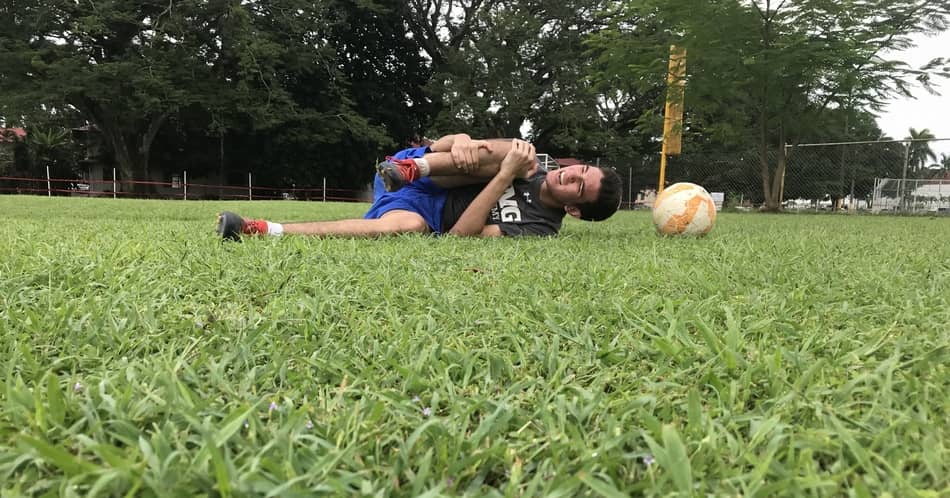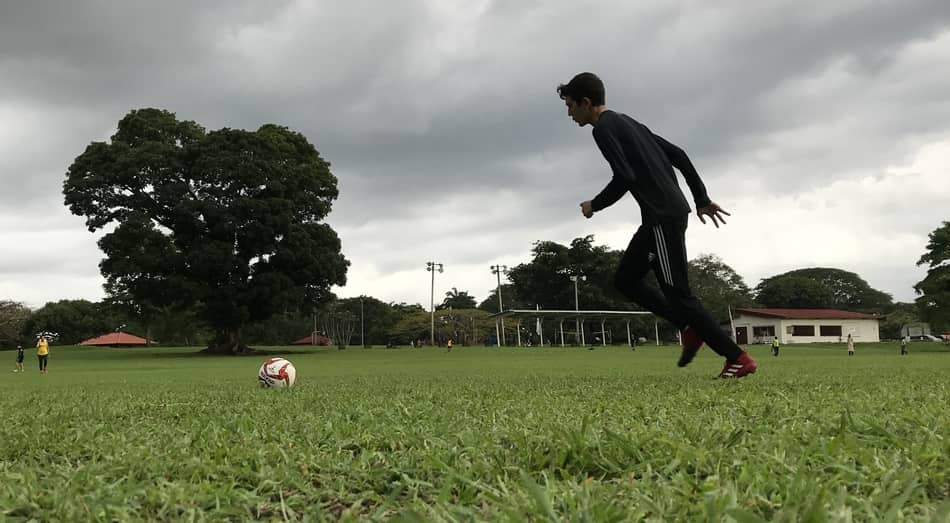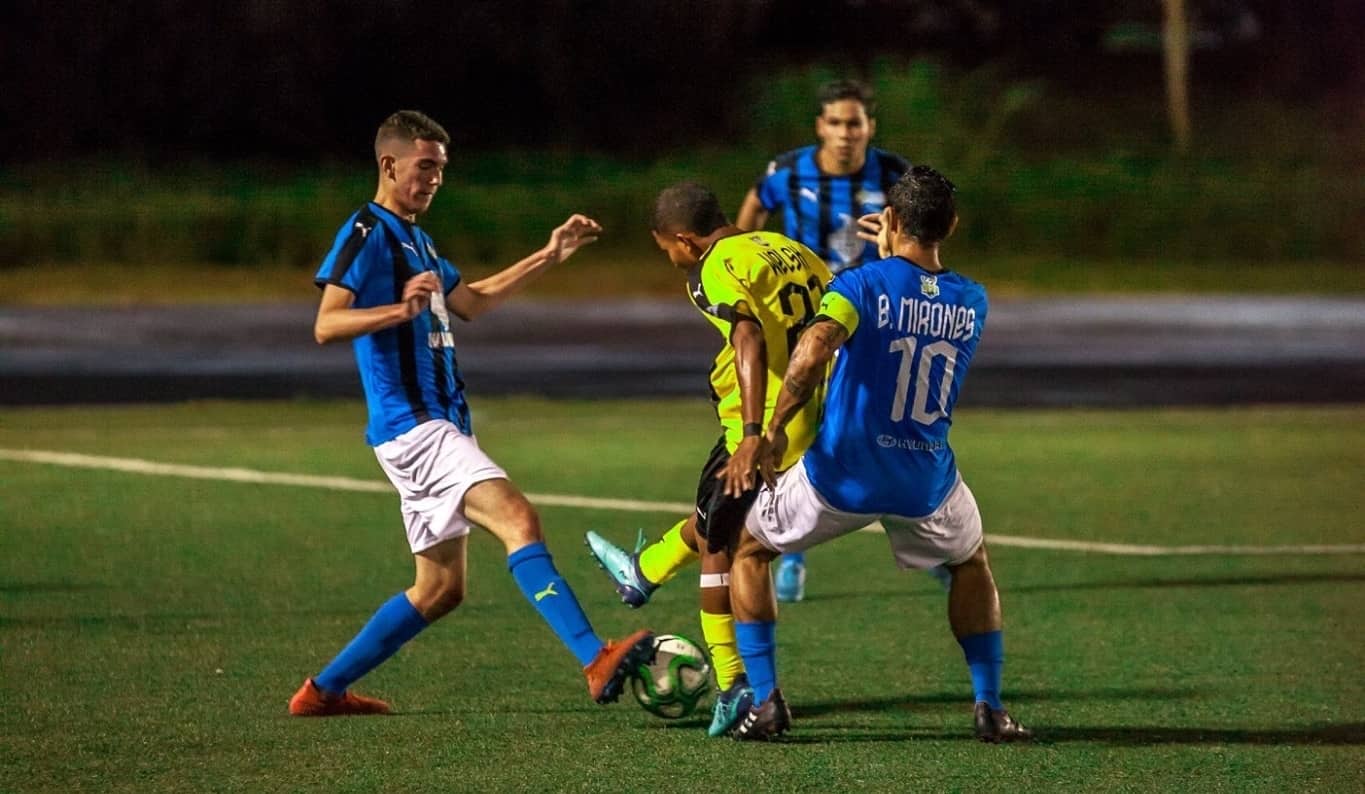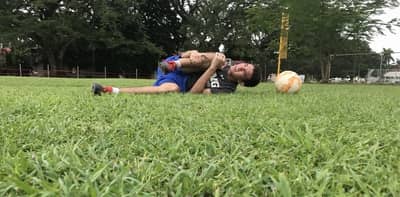
Anyone that has seen a soccer game in their life has immediately noticed that soccer players seem very dramatic and tend to excessively exaggerate normal fouls. We’ve all seen players roll in the grass while they shout desperately for help, and suddenly, 5 minutes later, stand up and keep playing as nothing has happened. For this reason, soccer players are seen as “soft” or “weak” by other sports fans.
So, why are soccer players so dramatic and fake injuries? This phenomenon is called Foul Simulation. Players use it as a strategy to manipulate the decision of the referee. In this way, the referee really believes there was a foul and can make a call beneficial for the simulating team, like awarding a red or yellow card for the opposing team or a penalty kick.
If a referee buys your simulation he can make decisions that can help your team win the game. However, foul simulation is sanctioned by the soccer rules with a yellow card. With the introduction of technology to help referees in soccer, VAR (video assistant referee), it is becoming less useful to simulate fouls as referees can review the replay and realize if the player actually simulated the foul, which will end up with a yellow card for the simulator.
Foul Simulation in Soccer
Soccer is a contact sport. Most of the fouls that happen in the game are because of direct contact between players such as tripping or kicking to make someone fall. Every contact, except for shoulder to shoulder and body movements to cover the ball that a player does without the intention of fighting for the ball is a foul.
Even though it is a contact sport it’s not extremely dangerous. I wrote an article about How Dangerous Soccer Really Is where I compare the risks of playing soccer against playing other sports.
Most of the time, fouls are unintentional. Because the game is so fast, the speed that a player has can prevent him from being able to control his body and end up committing a foul. Also, because the game is played with the feet, it is a lot more common to see fouls ending up with players going to the ground than in other sports. The fact that most fouls end up with the player going to the ground makes it easier to simulate a foul than in other sports.
Decision making by referees happen within seconds, which is why a simple scream can make the judge sanction a foul or not. I’ve even done this myself in games.
Most fans from other sports think soccer players are soft for this excessive drama and faking. Even I as a soccer fan think it’s excessive, but the real reason why they do it is as a strategy and not because they are soft. In fact, most soccer players are very tough and intelligent guys. A player may seem tough most of the time in the field but may fake being fragile at some point, so a foul can be awarded for the team.
Briefly, the benefits that a player can get by simulating a foul for their team are:
- Yellow or red card for a player in the other team
- Penalty Kick for the team
- Direct or indirect freekick opportunity to score
- Frustration in the other team’s players
Yellow or Red Card for other team’s player
Another rule of soccer that makes it ideal to simulate fouls are yellow and red cards. Depending on the position of the field, intentionality, frequency, and roughness of a foul the referee can sanction a player with a card. If players simulate a foul successfully on a player that already has a yellow card they could get him thrown out of the game with a red card, which could put their team on an advantage. Also, if a player fakes a foul against the other team’s last man, they could get him expelled from the game too.
This is a rule that is rarely seen in others. At least in the most popular sports in the United States such as baseball, football or basketball, there is no rule that sanctions a team to play with one player less than the opposing team for the rest of the game. In basketball, for example, a player can be thrown out because of foul accumulation, but the team can replace him and keep playing 5 against 5. The same thing happens in baseball or football for unsportsmanlike conduct.
In soccer, simulating a foul can have a greater impact than in other sports. Besides simulation being harder, it is useless most of the time. However, in soccer because of the yellow and red card rule it can seriously impact the game.
Penalty Kick for the team
However, the most common foul simulation is inside the penalty box. In soccer, any foul that happens inside the penalty area is awarded a direct penalty kick alone against the goalkeeper. Most penalty kicks are scored and can seriously impact the course of a game. In contrast to other sports like basketball or football, in soccer, the average number of points (goals) per game is only 2. If a team scores, it is a lot harder to make a comeback than in other sports. This means that a team can literally win a game by faking a foul for a penalty kick.
Foul faking and few amount of points per game are among the reasons why soccer is not popular in the United States. You can read about this in my article: 6 reasons why soccer is not popular in the United States.
I would compare the penalty kick to a free throw in basketball. Let’s say that a player simulates a foul in basketball and wins 2 free throws. In the best scenario, he scores two points for the team. Only with those two points, it would be impossible to win, as in most NBA games each team scores at least 100 points.
On the other hand, if a soccer player fakes a foul and wins a penalty kick they could score one goal. A soccer game can be won with only one goal if the other team doesn’t score. A 1-0 final score happens a lot in this game. One penalty kick can break the tie for the rest of the match.
Direct or Indirect Freekick

On the other hand, the fouls that can be beneficial for a team are not only the ones inside the penalty box. Free throw strategies outside the penalty area are practiced a lot by professional teams. In fact, some teams rely just on free throws after a foul is awarded to score most of their goals.
A team that is not very skillful but knows how to play a stopped ball, either it is because they have great free throw takers or are able to make great crosses and score by air, has great chances of winning a game. This is why soccer players try to simulate fouls wherever they are in the field because fouls in soccer directly translate into scoring opportunities.
Frustration in opponents
We’ve all been against unfair decisions by the referees and it can be frustrating. These injustices in soccer are very common. This is because being a referee in this game is very hard. Imagine trying to make your work fighting against all the players that are trying to fake fouls all the time. Besides, the implementation of technology in soccer has been very retarded in comparison to other sports. Which means that referees have to make decisions solely from what they see, without being able to look at a replay. This is why simulation has been so successful in this sport.
“Soccer is played with your head. Your feet are only your tools” Andrea Pirlo
As a player, when you know you haven’t committed a foul and you are sanctioned against it anyways it becomes VERY frustrating for the whole team. In the end, if a team loses their mind it is even harder to play well and be able to fight back.
Isn’t this unfair/unethical?
Yes, it is. It is even not permitted in the sport. If a referee considers you are trying to simulate a foul you will be sanctioned with a yellow card. This is why, if you simulate and are caught 2 times during a game, you can have a double yellow card and be thrown out.
It is a conduct that is deeply rejected among soccer players and fans. Players that are well known for always trying to fake fouls are Neymar and Robben. Everyone knows they are great players, but when they try to simulate too much they get heavily criticized. However, to be realistic, if a player occasionally tries to simulate it will be unnoticed by most people, as it is considered historically normal conduct in soccer players.
You can ask any soccer fan, and they will tell you that soccer is one of the most unfair sports. Many times I’ve wanted to stop watching and playing the sport because of unfair decisions by the referees and the game itself.
It is different from a sport like baseball in which the “honor” and “respect for the game” are very important for both fans and players. Sadly, soccer teams and players will do anything they can to win even if they don’t deserve it. The worse thing is that they don’t even feel guilty about it because they have been affected by unfair referee decisions before.
FIFA, soccer’s biggest organ, has promoted worldwide the FIFA Fair Play program, by awarding players and teams recognition for playing a clean game that stays away from unsportsmanlike conduct like foul simulation and extensively promotes sportsmanship.
How VAR can prevent foul faking or simulation

In the article, I’ve mentioned how soccer has been retarded in comparison to other sports to implement technology to make the game more fair for everyone. Referees are humans and it’s impossible that they don’t commit mistakes. Players’ lack of honesty and constant trying to simulate unexisting fouls makes it even harder for them to make the right decisions.
This is why the recent implementation of VAR, Video Assistant Referee, has been a huge advancement to fight against the excessive drama and foul faking of soccer players.
Before VAR existed, referees had to make decisions based only on what the see in real-time. They weren’t able to watch the replay to confirm they made the right decision. In this context, foul simulation was extremely useful because the referee couldn’t go back and check if you were actually simulating.
VAR is used exclusively in those game situations that I mentioned before like conflicted penalties and red cards. With VAR, players have to think twice if they want to simulate. Even if the referee awards a penalty, a foul, or a red card at first, they can review it to turn back their decision and sanction the simulating player with a yellow card.
However, it is still hard and expensive to implement VAR in all soccer leagues and games in the world, which is why only the top leagues and tournaments in the game have this technology. With time, we’ll see VAR being implemented more and more around the world’s leagues.
Women’s soccer is less dramatic

A strange fact about flopping in soccer is that it is most common in men’s soccer, even though fouls are more frequent and tougher in female games. In women’s soccer when a player receives a tough foul you rarely see them making a show as men do. It may have something to do with the culture of women. In my opinion, I think that women see the game differently, they are a lot more competitive than men and want to win the game by truly being the best and not by incorrect referee decisions.
Besides, if a woman is kicked by another girl, they won’t want to seem weak against other women. We all know women are a lot more prideful than men when competing against each other. However, I truly believe that men should copy women behavior and competitiveness when playing.
Related questions
Are soccer players weak or soft? No, actually soccer is a very tough game. I would say it is a lot tougher than basketball or baseball. Most of the time you have to be tough and strong in plays if you don’t want to end up injured. However, there are specific moments in the game that are ideal for “flopping” which is why people have a weak impression of soccer players.
Are soccer players faking injuries? Not actually. Most players just exaggerate a foul so it looks tougher than it actually was to influence the referee to sanction the player with a yellow or red card. But faking an injury would mean leaving the game for no reason.

